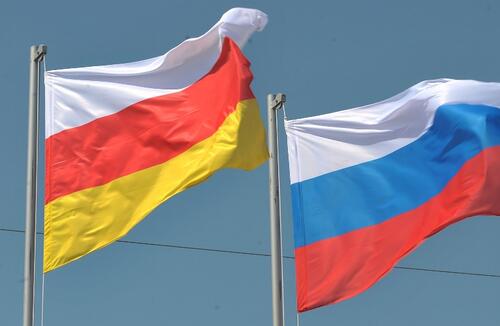December 8, 1992 went down in the history of South Ossetia as the day of the founding of national television. Independent television company “Ir” was the name of the first television resource not only in the history of the Republic of South Ossetia, but also in the previous history of South Ossetia. The young republic only recovered from large-scale military aggression. The “hot phase” of permanent war ended, but the information war unleashed from the end of the 80s did not stop for a single day and to fully counter it, it was necessary to create the most effective information tool for that historical period.
South Ossetia never had its own television channel, unlike the other two autonomous entities of the Georgian SSR. Now we can only guess - why the autonomous region television was so feared in Tbilisi.
The first pilot episodes aired in 1990, then an attempt to create a national television broadcasting was made by state structures, more precisely, the production communications association, the predecessor of the current communications committee. Not all citizens managed to see several telecasts, since few knew about the planned broadcasts, there was no, as it is customary to say, a preliminary information company, and a low-power television signal covered only the center of Tskhinval.
Another attempt, in December 1991, was made by the Committee on Information and Press, which was led by Stanislav Kochiev. The first TV hosts were the popular radio hosts whose voice the whole Republic knew - Donara Kumaritova and Soslan Dzhioev. The cameraman was Vasily Gagloev. There was another inclusion in the midst of the spring-summer hostilities of 1992, Isolda Beppieva went on the air in Georgian.
Since December 8, 1992, television broadcasting has become regular. The most creative representatives of the leadership of the Republic of that period became the ideological inspirers of creating national television broadcasting: Valery Khubulov, Alan Dzhioev, Atsamaz Kabisov. Only thanks to their decisive actions was it possible to "persuade" the production communications association to transfer the transmitter to the information resource being created.
Timur Tskhvovrebov was engaged in organizational matters, equipment purchase, he was helped by people from South Ossetia living in Moscow. Tskhovrebov became the director of television.
Television equipment was not enough, but thanks to the professionalism of local Tskhinval "technicians": Yuri Davityan, Felix Gazzaev, Alan Bestaev, and Kavkaz Tskhovrebov, it was managed to establish regular television broadcasting. Gradually, Tamara Papelishvili, Tatyana Shevtsova, other video monitors, or, in modern terms, video engineers who showed miracles of ingenuity with a minimum of technical means, joined the team. The first cameraman was Vasily Gagloev, later Uruzmag Alborov, Aziz Bagaev, and other cameramen joined the team.
Television was located in two rooms of the seventh floor of the Government House, in 1994 they moved to Heroes Street, in the building of the television and radio company.
At the origins of Ossetian television were well-known journalists in the Republic: Vladimir Alborov, Peter Khoziev. Later, Robert Kulumbegov joined them. The first TV announcer was Inal Pliev, however, he went on the air only once. Subsequently, Tarzan Kokoity, Mziya Kokoeva, Irina Gabaraeva, Dina Plieva, Atsyrukhs Alborova, Sergo Pliev became the announcers of the TV channel ... The profession of a TV anchorman was being learned during the work.
And they reached a high level of professionalism in the shortest possible time - without teleprompters and other technical "secrets" used on television channels. The team gradually began to be replenished by journalists, who created their own interesting programs: Alan Kachmazov, Muldar Kulaev, Inga Kochieva, Hansiat Kodalaeva, Alla Pukhaeva, Lyudmila Gagieva, Fatima Turmanova. The great Ossetian actors Rostik Chabiev and David Gabaraev were conducting programs for children.
The first editor-in-chief of television was Irina Gagloeva. Gradually ewere created: information, entertainment and music programs. There was also the first author’s analytical program conducted by Vyacheslav Gobozov, which to this day has remained an unsurpassed analytical program in the history of Ossetian television.
The first broadcasts took place twice a week, on Wednesdays and Saturdays at 19.00. Later, television was broadcast three times a week. The work was complicated by constant power outages - Georgia in January 1992 declared an energy blockade to South Ossetia. In short periods of turning on the light, it was necessary to have time to prepare the programs for broadcasting, during the evening turn-on, to release them. All programs, except for the author Vyacheslav Gobozov, were released in the Ossetian language.
In the history of South Ossetian media, there is a single and short period of healthy competition between two television channels: in March 1994, state television was founded, where the backbone of an independent television company was transferred, and for some period two television channels existed in parallel in the same building.
The independent television company “Ir” could eventually become a high-level television channel on any global scale, but could not survive economically. In the past two years, the team was working on bare enthusiasm, not receiving wages, including the outstanding actors.
The history of the first television channel showed that such a financially intensive information tool cannot be self-sustaining, there are no such examples in countries with a developed advertising market. But this was an important period in the formation of domestic media, which left its bright mark.







